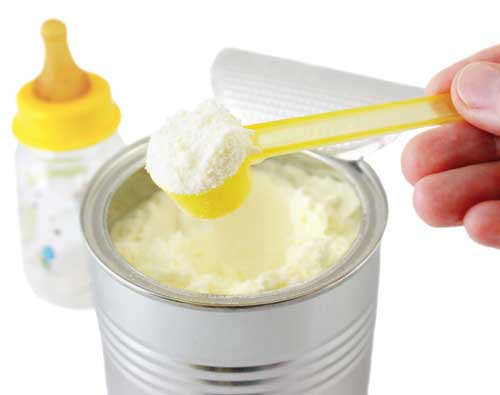Strategies to Halt Package Fraud
PACKAGING
According to the World Customs Organization, food fraud totals $49 billion annually, and while exact numbers on packaging fraud are not available, it is prevalent in the packaged food market. Packaging fraud is multifaceted since it affects both the food and package; consequently, it can decrease shelf life and increase the risk of food safety issues and the likelihood of damaged food. Moreover, fraudulent packaging prevents some protections against food fraud. Prediction and prevention are two ways to successfully combat packaging fraud.
 Fraudulent Packaging = Food Waste
Fraudulent Packaging = Food Waste
Packaging fraud has a major impact on many functions of packaging, including machinability, shelf life, sustainability, and product protection. The United States, the European Union (EU), and other countries regulate the composition of packaging that is in direct contact with food. Plastics regulation (EU) No. 10/2011 requires that authorized package recycling processes, as defined by the European Food Safety Authority, be employed for direct food contact. Mineral oil and saturated and aromatic hydrocarbons in printing inks are of concern with post-printed recycled paper in direct food contact although the EU does not have harmonized regulations for recycled paper in direct contact with food. “Guidance for Industry: Use of Recycled Plastics in Food Packaging: Chemistry Considerations,” by the U.S. Food and Drug Administration, addresses controls on contamination from recycled packaging in direct food contact. The types of packaging that are prone to fraud include recycled content of polymers and paperboard, alternative packaging materials such as kenaf and bio-derived polyethylene terephthalate (PET), and polymer processing aids.
When the price of recycled or alternative polymers exceeds that of traditional polymers, there is an increase in economic motivation to use substitutions. The economically motivated and pervasive nature of recycled and alternative material fraud has resulted in consumer-packaged-goods manufacturers losing confidence in claiming recycled content packaging. Corporations are often noncompliant with corporate goals that relate to sustainability and food waste reductions when packaging is fraudulent. Specifically, the high incidence of recycling fraud has resulted in broad ranges of recycled content statements on packages, such as “may contain up to 30% kenaf fiber,” “likely derived from sustainable forests,” and “contains up to 100% recycled PET” or the absence of recycling or alternative-fiber claims entirely. Because labels lack definitive information, consumers cannot make well-informed purchase decisions. Carbon footprint labeling—which is common in the United Kingdom, Sweden, and Taiwan—is incorrect if the amount of packaging material cannot be confirmed. Therefore, packaging fraud causes the loss of the essential connection between consumers’ purchasing power and their ability to make sustainable package choices.
Packaging fraud also threatens the primary function of a food package: protecting food. The migration of package components into food varies based on the final package structure, the amount of potential migrant (e.g., processing additives), and the food itself. When package construction is not as specified, higher than normal migration and permeability can occur, which amplifies numerous food safety and preservation risks. This is especially pertinent when alternative materials are substituted in place of approved raw materials. These substitutions invoke a host of issues associated with the use of unapproved processing aids necessary to create material similar to the approved material. Migration of unapproved processing aids impairs food safety.
Besides direct migration issues, other functions of packaging relating to protection are affected by fraudulent packaging. In the food industry, packaging has many converting operations and suppliers. In one instance, an alternate resin was substituted for an approved resin and supplied to a bottle manufacturer. Unaware of the change, the bottle manufacturer unknowingly produced bottles that required a higher application torque for sealing caps after filling. Because the production line was not modified to the new required torque, containers were not sealed properly and microbial growth occurred. The ability of a packaged food within a corrugated shipping case to withstand the required shock, vibration, and static and dynamic compression during distribution is directly related to whether the case is constructed of fraudulent components. For example, if a paperboard carton has higher than specified recycled content, its paper fibers are shorter than required and the carton is unable to withstand warehouse static loads and would crush. Crushed cartons result in food and package waste.
--- PAGE BREAK ---
 Prediction, Prevention, and Shared Value
Prediction, Prevention, and Shared Value
Solutions to packaging and food fraud have moved from mitigation and detection to more pragmatic prediction and prevention. Prediction and prevention of packaging and food fraud are interrelated as predicting package fraud aligns with predicting food fraud and both are often economically driven. The role of packaging in predicting food fraud is small, but packaging fraud can be predicted from the same type of tools used to predict food fraud. Predictive capabilities for food fraud are advancing rapidly. The Food Protection and Defense Institute (FPDI), St. Paul, Minn. (foodprotection.umn.edu), addresses threats to the nation’s food system and has been a Homeland Security Center of Excellence at the University of Minnesota since 2004. One of the organization’s tools for addressing fraud is the Focused Integration of Data for Early Signals (FIDES) project, which employs data fusion to predict the probability of food fraud by tracking import refusals, natural disasters, terrorism, social media, prior incidents of economically motivated adulteration (EMA), and other factors. Incidence of EMA is also tracked by the FPDI and the U.S. Pharmacopeial Convention.
By focusing controls on identified points of weakness, manufacturers can prevent food and packaging fraud. The Food Safety Modernization Act and the GFSI Guidance Document (7th edition) promote vulnerability assessments as a first step in preventing fraud. “Because fraudsters are well-funded and stealthy, they can take advantage of ever-lengthening and increasingly redundant global food and packaging supply chains. Here vulnerabilities exist due to the remoteness and potential anonymity of fraudsters,” says Doug Moyer, assistant professor, Michigan State University, and coauthor of the January 2013 Food Technology article “Understanding and Combating Food Fraud.” Michigan State University’s Food Fraud Initiative, East Lansing, Mich. (foodfraud.msu.edu), has pinpointed effective vulnerability assessment strategies. Controls that involve incoming inspection can be performed to assess package components, batch, and surrogate or indiscernible-difference testing. But the time and costs are often not conducive to routine sampling with just-in-time packaging inventories. Vulnerability assessments in packaging can assist in focusing controls as they do in the food industry. For example, if the price of processing aids used to produce steel cans increases due to strife where the processing aids are mined, a vulnerability assessment would flag the processing aids as being vulnerable to counterfeiting, and protocol would be developed to prevent fraud. Increasingly, purchasing departments review financial information of packaging suppliers to ensure that suppliers are profitable. If financials do not demonstrate that suppliers will remain profitable by supplying the specified product, this suggests that fraud is being planned.
Once vulnerability assessments have identified risk, decreasing risk by implementing value chain initiatives and controls is essential. Building trust and shared value with suppliers to reduce vulnerability is highly effective. In the spirit of transparency, sharing results helps build trust. One technique to institute controls is compendial testing.
Compendial testing, which assesses the presence of a compound, measures what should be present within a food instead of attempting to pinpoint a plethora of contaminants. With this information, foods and ingredients can be screened based on the possibility of a food containing adulterants and then known and unknown adulterants can be determined. The same process can be used for packaging. Controls for incoming packaging inspections increase in complexity when trust in packaging suppliers is low.
Controls may serve a critical role, but the efficacy of specifying controls when packaging and food fraud vulnerabilities vary is low. Employing shared value for packaging and food offers a more robust solution. Harvard University’s Institute for Strategy and Competitiveness, Boston, Mass. (isc.hbs.edu), provides strategies for shared-value approaches. A shared-value focus for food and packaging fraud treats fraud as a social problem and emphasizes that economic value can be gained by addressing fraud as a wise business solution. This involves focused alignment of initiatives with companies that share the value of eliminating fraud. By disclosing information on fraudulent suppliers, competitors can share value and improve business conditions. Whistle-blowing, the most common method of identifying food fraud, is also critical for package fraud. Packaging suppliers who foster confidence through high levels of transparency are investing in shared-value tools (e.g., a shared database) to increase their sales. The economics of shared value are multifaceted and increase confidence in products and packages, allow for proper labeling of recycled content and ingredients, increase confidence in food safety, and decrease controls.
Fraud weakens value chains and consumer confidence in food and packaging. Time and energy spent instead on addressing fraud can achieve alternate corporate goals.
 Claire Koelsch Sand, PhD, Contributing Editor
Claire Koelsch Sand, PhD, Contributing Editor
President, Packaging Technology and Research
Adjunct Professor, Michigan State Univ.
[email protected]
